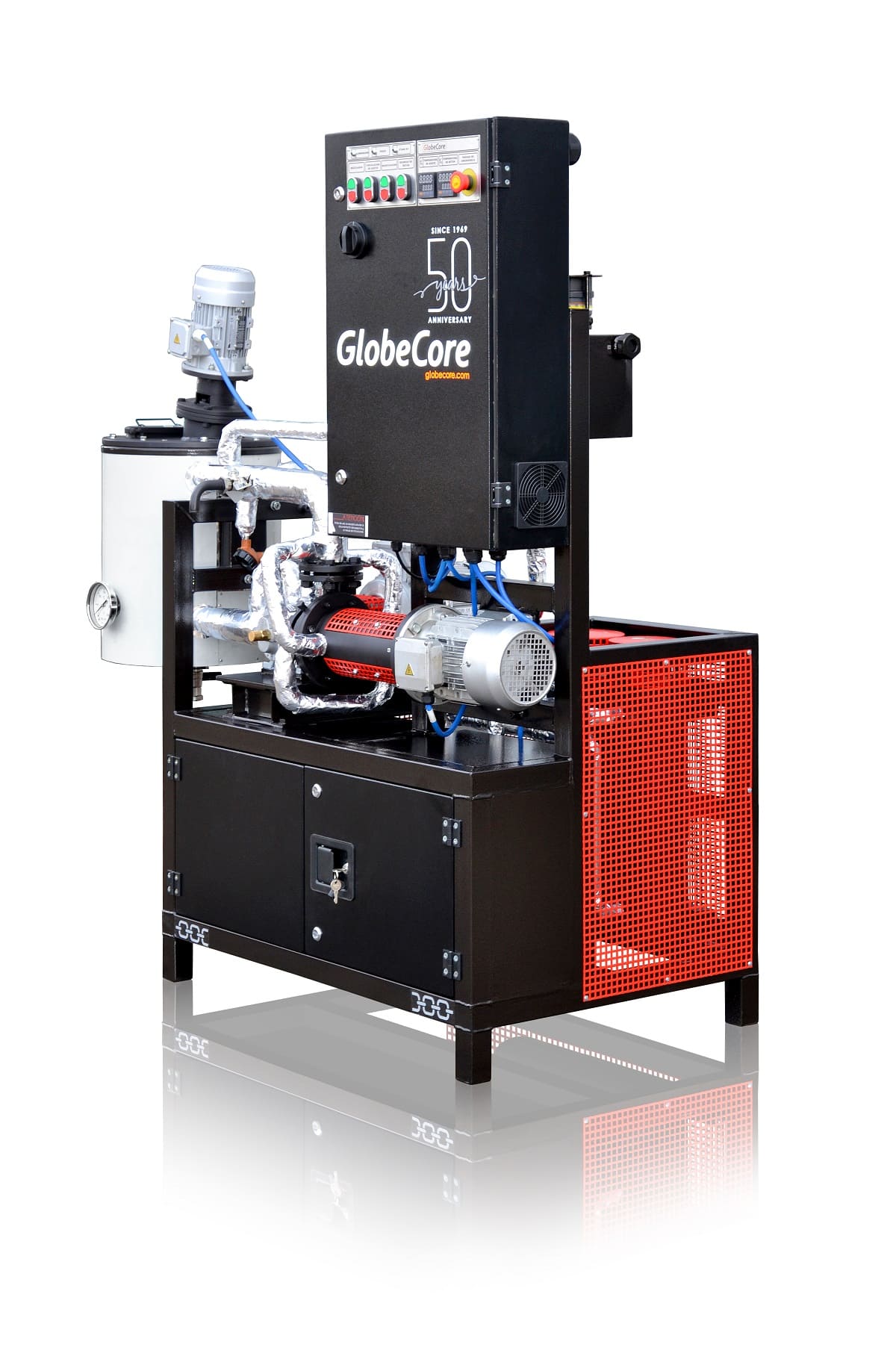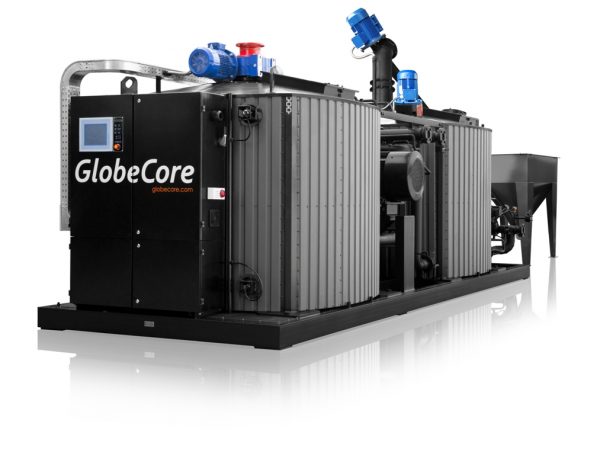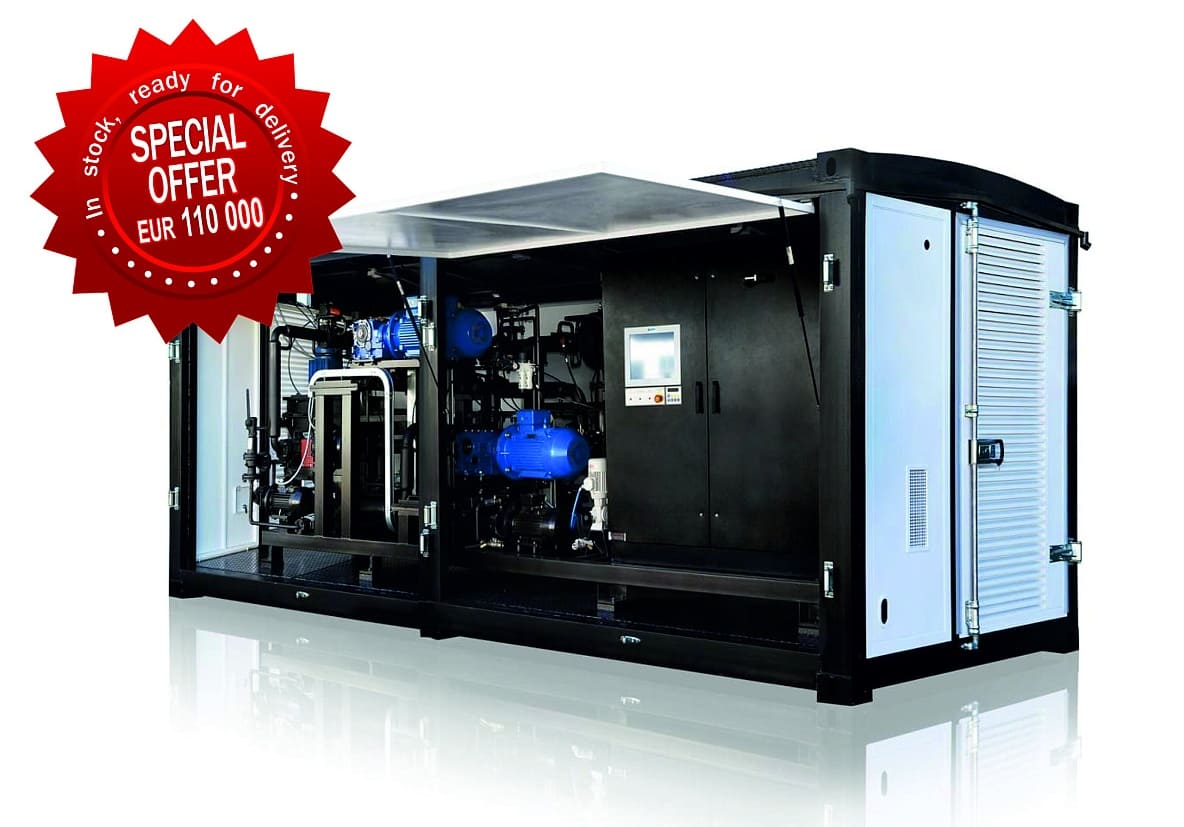Petroleum bitumen is widely used in construction. It includes materials for roofing, waterproofing, air tight material, piping protection (and other types of anti-corrosion and even radiation production), materials for road top, surfacing of canals, settling ponds, sludge collectors etc. Despite the growing production of bitumen, it is still in short supply. Some of the supply problems are due to the limitation inherent to bitumen, i.e. its brittleness in subzero temperatures. Bitumen surfaces in cold climates quickly deteriorate. Some roofs accumulate as many as 12 layers of bitumen after multiple repairs. The same is true for road construction. All this leads to overuse of bitumen. In the south, bitumen surfaces fail due to bitumen melting, with the added solar influence and significant temperature variations.
Polymer additives, especially rubber, can reduce the brittle temperature and increase bitumen temperature stability. Application of such polymer modified bitumen increases bitumen surface life. Accumulated results of many years of observation of various surfaces made with many different polymers are available. All of them have one thing in common: extended lifetime. Other properties improved by polymers are deformation stability in all range of operation temperatures, water resistance, structural strength etc.
Consequently, a new direction of polymer modified bitumen use has appeared; however, many questions remain: how polymers interact with the structure of bitumen, what are the effects of polymer, which polymer materials are the most efficient, can the properties of polymer-modified bitumen be predicted based on the known properties of the polymer and how to address the technical complications of combining bitumen with polymer.
The improved properties of polymer-bitumen composites are usually explained by the formation of chemical bonds between polymer and bitumen. Chemical methods are pointless in this case, due to the extremely complex structure of bitumen and polymer. Since the emergence of IR spectroscopy, almost none of the polymer bitumen composites were found to contain new chemical compounds, nevertheless, new attempts to prove formation of new substances in polymer bitumen mixes are still undertaken. Such attempts usually share a common methodological flaw: offering only qualitative description of spectra without quantitative evaluation.
Electronic microscopy and optical methods of research offered new materials, demonstrating the distribution of bitumen and polymer in a composite and particle size. Evidently, small amounts of polymer (1—2%) can solve in the low-molecular portion of bitumen, i.e. oils. In larger amounts, polymer is distributed in bitumen as separate, unconnected particles. Their effect on the composite is similar to that of a filler. At 5—10% content, particles increase in size, apparently due to aggregation, come close and at 10—15% form a loose web-line structure. With the content of polymer above 25%, bitumen is included into the structural cells of the polymer and the phases are inverted.
The mechanism behind increased strength and deformation stability of polymer bitumen materials can be considered as a composite materials, in which bitumen is the matrix, and polymer is the dispersed phase. The composite behaves as one material, where the connections between different particles can be imagined as mechanical interaction between components by surface connections. The properties of the composites as a rule are superior to the average or summarized properties of the separate components, displaying a pronounced synergy effect,
With small concentrations of polymer, the composite can be considered as dispersion strengthened. The increase in strength is due to the impedance of movement in the matrix by finely dispersed particles. The degree of strength increase is proportional to the resistance by the particles to such movement. This effect is observed with dispersed phase in the amount of 2—4% by volume. Considering the properties of polymer bitumen composites with 3—5% polymer content, one will notice a significant reduction of brittle temperature, without increase of deformation stability. It is obvious that brittle point is reduced due to increased strength.
With higher concentrations of polymer in bitumen, the composites can be viewed as fibers or layers. The matrix (bitumen) turns into a medium transferring the loads to the fibers, and redistributing the loads if the fibers break. Such materials are strong, elastic and resistant to fatigue, which is especially important to ensure operational reliability of the material. The process of deterioration of such composites usually begins with the formation of microcracks, which slows down with encountering a particles of rubber, and then decreases or even stops entirely due to relaxing of overloads at the apex of the crack.
In the theory of composite materials, a large role is played by the interfacial boundary and the transitional layer, which possesses special properties compared to each of the phases. Partial dissolution of polymer and the matrix is possible on the surface of the boundary, as well as the so called segmental solubility. Strengthening of the composite is due to the special properties of the transitional boundary, the cohesion energy of which is significantly lower than the average for the mix, ensuring higher rate of load relaxation. It is suggested that a crack meeting the transitional layer releases overloads. Such is the theoretical background for producing and using polymer bitumen composites with rubber and thermoplastic materials.
The requirements of the construction industry are so diverse that the practically used additives are beyond the scope of the discussion above. To increase cracking resistance (reduction of brittle point), cold resistant oil or oligomer is used. These reduce heat stability, but decrease the low temperature limit of bitumen application. Such additives are referred to as plasticizers. They enrich the oil medium in bitumen, including themselves in the colloidal structure. They do not expand the plasticity range of the material, their purpose is to increase cracking resistance at low temperatures.
Mineral powders, added to reduce bitumen fluidity, are of the third type – the stabilizers. They do not expand the application temperature range either. As a rule, they increase heat resistance, but also increase the brittle point.
Of all the additive types, structural additives are of most interest. They were instrumental in expanding the application temperature range to 200 (from —50 to + 150°С), making it possible to use polymer-modified bitumen both in the northern and southern regions.


 USB-3 Bitumen modification ...
USB-3 Bitumen modification ... USB-3 Small Plant ...
USB-3 Small Plant ... USB-3 Bitumen modification ...
USB-3 Bitumen modification ...